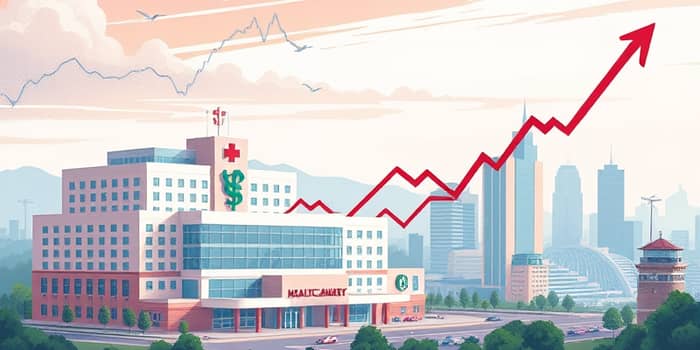
Economic downturns test the resilience of companies and sectors. While many industries buckle under reduced consumer spending and investment cuts, healthcare consistently emerges as a bulwark of stability and growth. This article explores why healthcare stocks have historically outpaced their peers during slowdowns, what drives this performance, and how investors can harness this insight for their portfolios.
By examining recent outperformance, long-term trends, and actionable strategies, readers will gain a comprehensive roadmap to navigate volatile markets with confidence and foresight.
There is a reason why healthcare is often called a defensive sector in market downturns. In the opening months of 2025, the S&P 500 Health Care sector posted a gain of 2.59%, even as Information Technology plummeted by 11.24% and Consumer Discretionary sank 14.08%.
Over the same period, the broad S&P 500 index declined 4.92%. This divergence reflects healthcare’s unique position: demand for essential medical services and products does not evaporate when the economy slows. In fact, healthcare hiring often remains steady or even increases during recessions, supporting families and communities while preserving revenue streams for companies across the sector.
Moreover, roughly 10% of the S&P 500’s “dividend aristocrats”—companies with 25 or more consecutive years of dividend increases—reside in healthcare, offering investors solid dividends and reliable income streams when capital markets tighten.
Long-term data underscores healthcare’s resilience. Over the past 30 years, healthcare outperformed the broader market in 10 of the 11 years when the S&P 500 delivered returns of 10% or less. These defensive characteristics emerge consistently across cycles.
During the 2007–2013 Great Recession, leading healthcare firms maintained strong revenue growth and profitability. No major payers, pharmacy benefit managers, or hospital systems recorded negative revenue growth, and profit declines lasted no more than a single year. When consumer confidence plummeted and credit tightened, healthcare fundamentals endured.
The COVID-19 pandemic provided a stark, if atypical, example. While the global economy contracted, companies supplying testing, vaccines, and critical care products witnessed surges in demand, offsetting declines elsewhere. In 2022, during a broader market correction that saw the MSCI World Index drop 18.1%, global healthcare stocks fell just 5.4% (local currency).
Healthcare’s outperformance is not a fluke; it stems from robust structural drivers:
Historical data confirms that healthcare spending outpaces GDP growth, reflecting the importance societies place on maintaining and improving health, regardless of broader economic conditions.
Within Pharmaceuticals and Biotech, companies like Eli Lilly have demonstrated how innovation—particularly in chronic disease—can drive robust returns. Medical device firms benefit from a surge in deferred elective procedures, while insurers capitalize on growing enrollment in government programs.
Digital health has emerged as a lightning rod for venture investment, rebounding more quickly than many sectors in the wake of market stress.
Healthcare’s defensive reputation should not overshadow inherent risks. Key considerations include:
Prudent investors balance the sector’s defensive qualities with careful stock selection and diversification to mitigate idiosyncratic risks.
To leverage healthcare’s resilience, consider a multi-faceted approach:
Additionally, integrating healthcare within a core defensive allocation can dampen overall portfolio volatility, enhancing risk-adjusted returns through turbulent markets.
Several evolving themes warrant attention as investors map their healthcare allocations:
Interest rate cycles: Healthcare often benefits when central banks signal rate cuts, reducing borrowing costs for capital-intensive R&D projects.
Mergers and acquisitions: Although M&A activity slowed in recent years, it is poised for resurgence, with large-cap acquirers targeting innovation-rich targets to bolster pipelines.
Political transitions: Upcoming elections inject uncertainty but may ultimately clarify policy frameworks around drug pricing and health reform, enabling long-term planning for market participants.
Healthcare stands out as a uniquely positioned sector that blends defensive characteristics with potent growth drivers. By understanding its structural advantages, monitoring policy shifts, and employing disciplined selection strategies, investors can harness the sector’s potential to weather downturns and capture upside in recovery phases.
In an era marked by economic unpredictability and rapid medical advances, healthcare offers a powerful avenue to achieve both financial resilience and meaningful impact—caring for society’s well-being while striving for sustainable returns.
References













